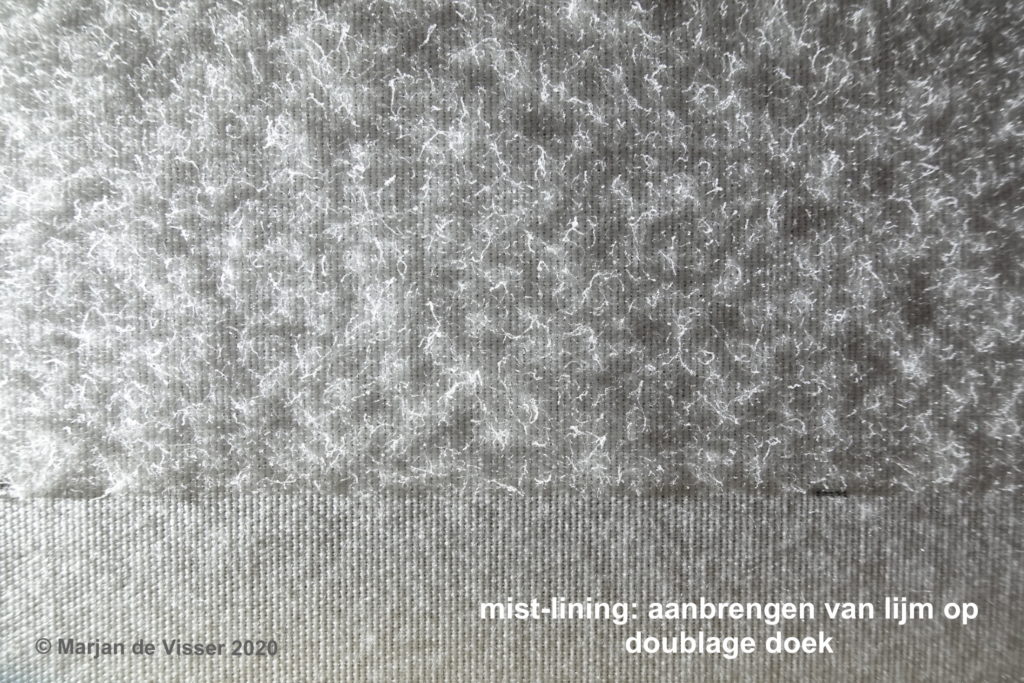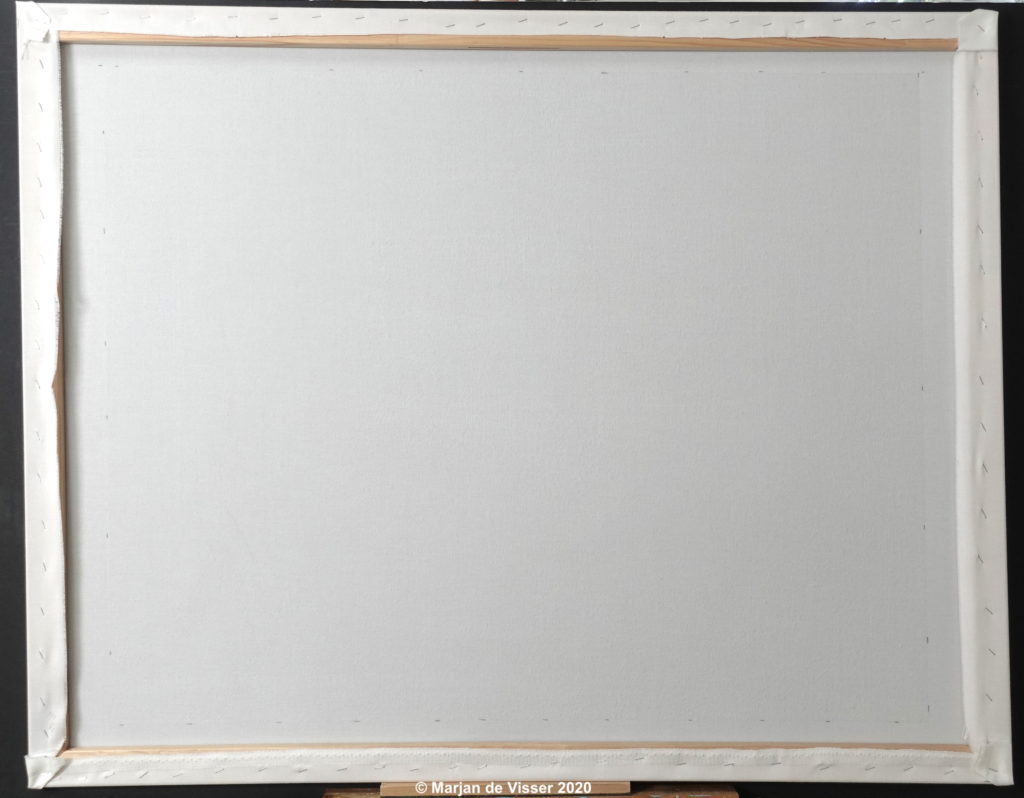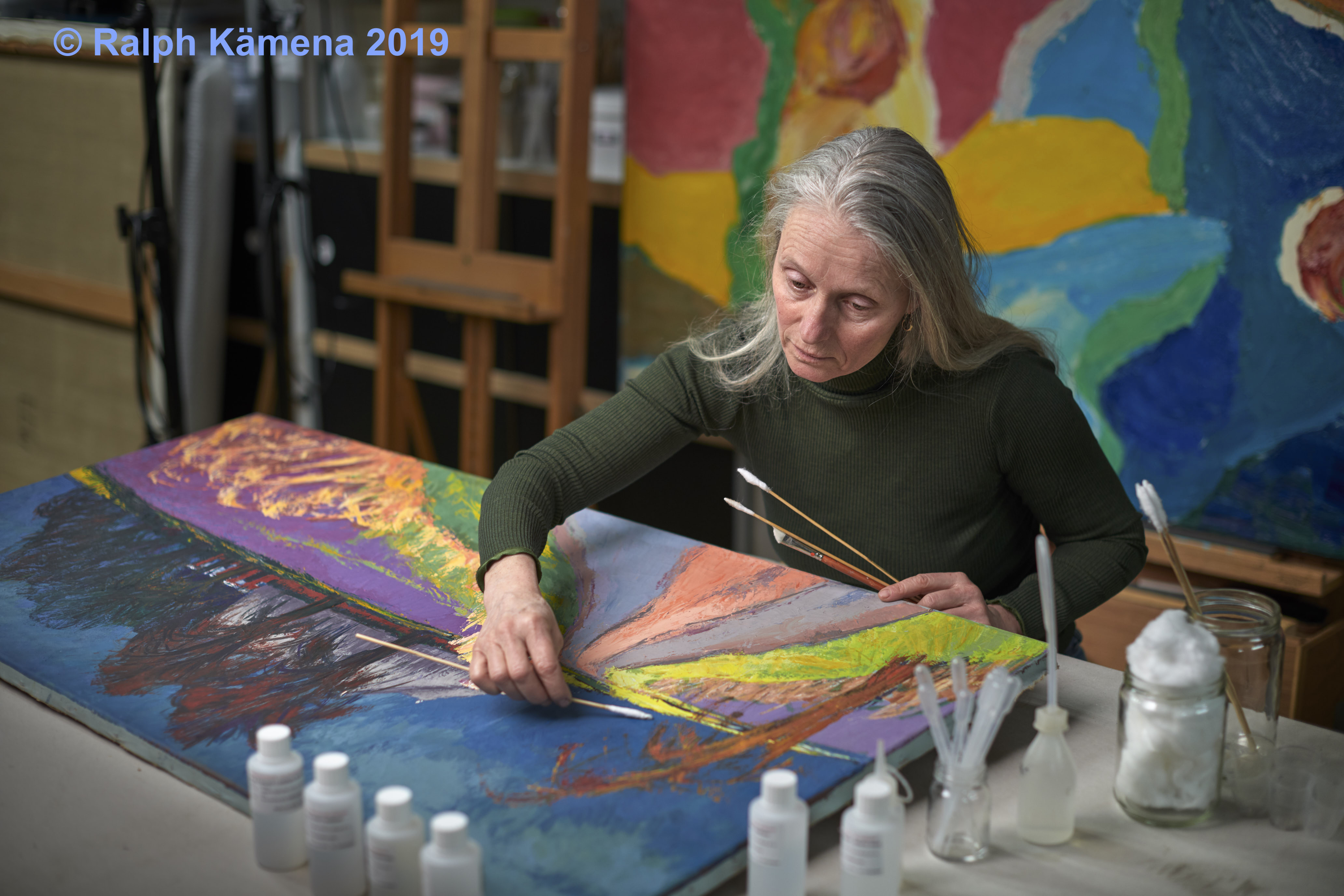Mist lining for low pressure lining
The installation required for a mist lining for a low-pressure doublage is low-tech and easy to make yourself. A tube system (electricity tubes) with little hole for a low pressure. This creates an extraction around the painting. And that is done with an industrial vacuum cleaner and a pressure regulator. The painting lies on the doubled canvas to be added. The doubled canvas has been prepared in advance with a mist of glue. Hence the name ‘mist lining for low pressure doubling’. The whole is packed in an envelope.
This mistlining was carried out in collaboration with Marya Albrecht Atelier Albrecht
Mistlining in practice
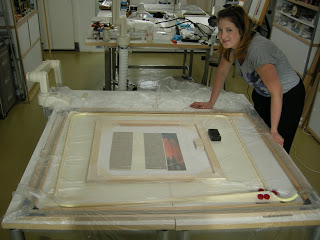
In studio Marjan de Visser, experience has been built up with this method. An intern, Maggie Barcovik even turned it into an internship project . Of course it is important to test every time. Through frequent testing with different materials, a good insight and solid practical knowledge has been gathered about this low-pressure technique called mist-lining
The mist-lining doubling technique is intended to support a weakened textile support. When a minimal adhesion is desirable.
Preparation of the doubling cloth
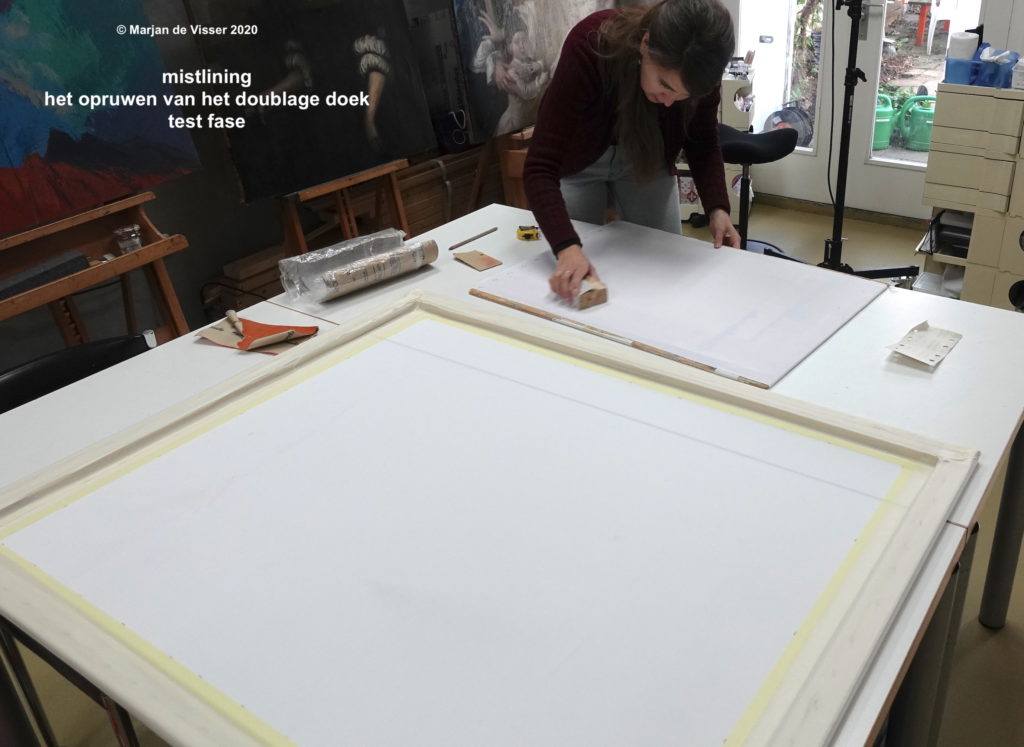
In order to be able to apply a mist of glue, the doubly cloth was stretched prior to this. The frame where the painting will be placed has been left free. The edges are taped. The last step, ‘roughening the fibers’, has been completed. The doubled cloth is ready for the glue. Sandpaper has been used for roughening.
Applying the mist of glue
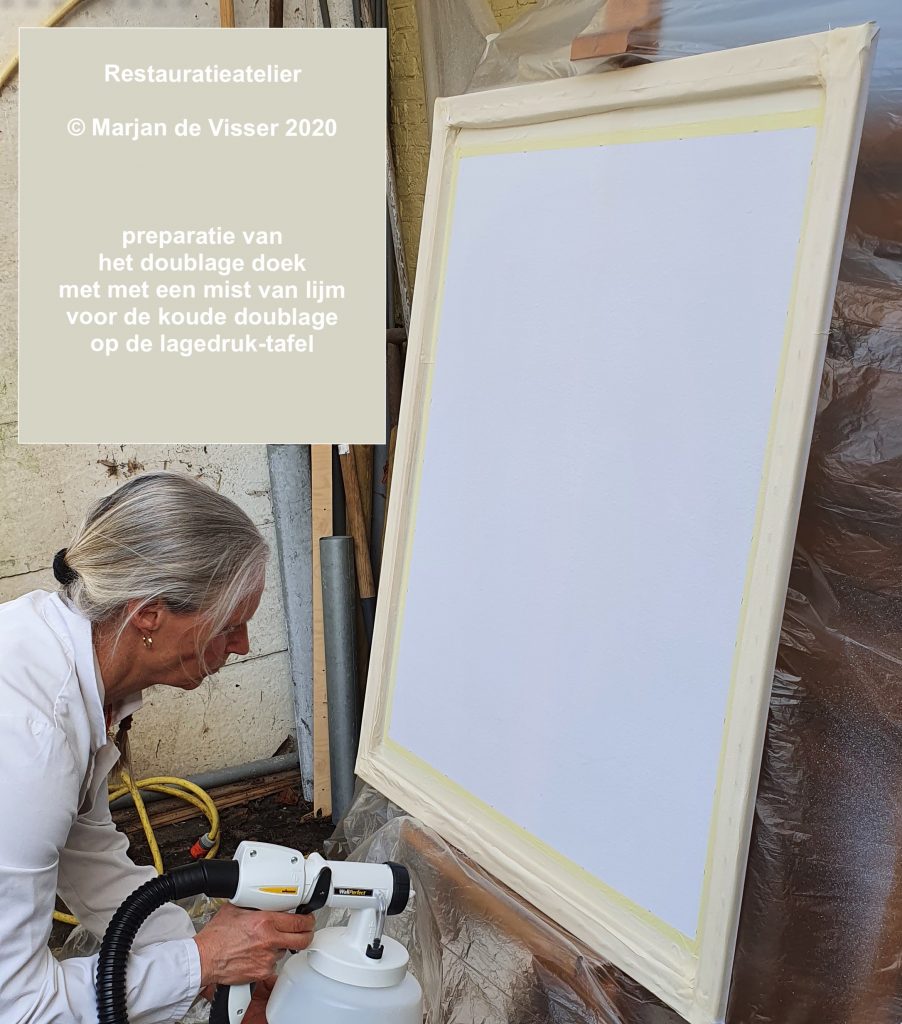
The High Volume Low Pressure Wagner paint sprayer W625 is a paint sprayer that works with air pressure. The conservator uses this to spray the glue on the canvas in approximately two layers. The distance to the double cloth is 30 cm. The layers are sprayed crosswise. The adhesive layer should not be too thick and only lie on the rough fibers. This is the mist of glue that is clearly visible in grazing light.
The adhesive is a combination of two different synthetic polymers and a thickener.
After the adhesive layer has dried, the protective tape has been removed. And only the frame for the painting has a mist of glue.
Suck the vacuum with the envelope.
After the glue mist has dried on the textile fibers, the doubled cloth is ready for treatment. The required envelope for the vacuum looks like this. To obtain the vacuum, a framework is needed that is covered with a sturdy plastic. In it lies the tube ring with the holes. The stretched double cloth has been placed in that ring. On it the painting with the image upwards. The whole is covered with a very thin plastic that can take the shape of the paint layers when vacuumed.
Version mist-lining for low-pressure doublage
The reactivation of the adhesive with a solvent and the low pressure ensure that the adhesion between the two fabrics is established. A thin cheesecloth injected with the desired solvent is placed under the doubly cloth for some time. The solvent vapors activate the adhesive. The vacuum ensures that both cloths adhere to each other under low pressure with the activated glue.

